Breath of Fire II was first released in English in December 1995, after hit Super NES RPGs like Chrono Trigger, EarthBound, and Final Fantasy VI had been released in English. Yet, unlike these classics, Breath of Fire II has always been notorious for the quality of its localization. I had very little experience with the game and didn’t really know what all the hubbub was about, so in late 2016 I decided it was time to finally take a look at it for myself.
Rather than play the game in isolation as I usually do for Legends of Localization projects, I thought it would be nice to share my newcomer experience and my localization findings live with other gamers. I played through the game bit by bit each day on Twitch, as one of the very first Legends of Localization live stream series. During these several weeks, I also developed a program that would display the Japanese text whenever a line of English text appeared. This wound up being incredibly helpful and let us take a closer look at the game’s translation without having to play both games side-by-side.
Before beginning, I didn’t have very high expectations for Breath of Fire II. The screenshots I had seen over the years showed poor writing, and the game has become synonymous with “bad 1990s game translation”. As a result, I also had very low expectations for the game itself.
It turns out that the game is actually surprisingly good – it’s got solid gameplay and it has nice variety in its story. But most of all, it brings up themes that few other games were dealing with at the time: religion, clashes between religious values, discrimination, self-sacrifice for the greater good, and the moral issues that come with authority are just a few that still come to mind as I write this two months after finishing the game. I’m sure there are many more.
I’m known for being a big EarthBound fan. My fellow fans and I have often touted EarthBound as being one of the few RPGs to do this unique thing or that unique thing, but I was surprised to find that many of those elements were in Breath of Fire II as well. From the big story themes all the way down to the little details like toilets (which BOF2 does even better than EB!), Breath of Fire II has a lot going on.
All that said, I quickly learned that Breath of Fire II’s reputation for having a terrible translation is 100% warranted. In fact, it’s so poor that it’s fascinating. I’m sure that every translated game out there has its own little quirks, flaws, and mistakes, but Breath of Fire II has translation quirks, flaws, and mistakes of nearly every category possible.
The screenshots galleries below will highlight some of the issues, but not all of them. When I first started to prepare this review, I went through every screenshot of every line of text in the game and wound up with about 400 examples of big, noteworthy problems. That was way too many, so I tried to narrow things down much further… and yet I was still left with about 150 examples. Breath of Fire II’s localization is such a mesmerizing mess!
The rest of this review contains spoilers, mostly in the form of screenshots. I was honestly impressed by how unpredictable certain plot points were, so I suggest coming back later if spoilers are a concern for you.
Breath of Fire II has a wide variety translation and localization issues – probably more than I’ve seen in any game I’ve played so far. Here are examples of a few different problems:
(You can read more about that last issue here.)There are many more issues to be found, though, so let’s take a look at things in more detail.
Nintendo of America’s content policies in the 1990s (which I cover in detail in my book about EarthBound’s localization) disallowed references to gods, violence, alcohol, and the like. Naturally, some of these elements were changed in Breath of Fire II… but most of the time these elements were left intact. Because of this weird inconsistency, it almost feels like NOA only glanced at the game at the time, if at all.
Throughout the game, I was amazed that this was actually released on a Nintendo system at the time.
Breath of Fire II features the ability to hunt and fish for food and items. The fishing mini-game has one of the most notoriously bad translations in gaming history, and I can see why. Literally every line of text in this mini-game has a problem of some sort!
The game’s translation features many spelling mistakes – too many to list here, but many of the following screenshots will surely showcase them. Here’s just a small batch for now:
There’s a short scene with a text scroll near the beginning of the game. This text is already shown in English in the Japanese version (with Japanese subtitles at the bottom), but it’s interesting how very well written this text is in comparison to the rest of the game’s translation. Looking back now, this inconsistency is rather striking.
Text presentation is more important than it sounds like at first. Even on the most basic level, Breath of Fire II’s English script consistently throws this idea out the window.
Naming is a key part of any translation/localization. It’s almost always a challenge, and a lot can go wrong, as Breath of Fire II demonstrates. Some of the issues are legitimate and understandable – some of the main characters’ names were changed to fit within four letters, for example. But genuine mistakes abound:
The title of the game is an entire issue of its own. The phrase for Breath of Fire II’s subtitle is translated three or four different ways throughout the game. Is it “The Fatal Child”? Is it “The Destined Child”? Is it “Child for the Mission”? Or is it something else? The localizers couldn’t make up their mind.
Breath of Fire II also features many references to real-life people and literature, but almost all of these connections are bungled in the translation. Here are just a few of the many examples. All of the Japanese names are spelled in mostly-correct English during the end credits, which makes the inconsistencies even more puzzling.
The translators simply guessed at how other names should be spelled, which is understandable – the translators weren’t native English speakers and it was more difficult to research names at the time. Even so, these problems are numerous and really stick out.
Much of Breath of Fire II’s script is phrased in a very unusual, stilted, and error-filled way. Here are many examples that only represent a fraction of what’s in the full script.
Different languages work in different ways, so game localizers need to take this into account with special programming and other technical solutions. Breath of Fire II has a few slip-ups in this department too.
This isn’t to say that Breath of Fire II’s localization is 100% a disaster. It does have its notable merits too.
When most gamers think of “bad localizations” these days, they probably immediately think of memes, inside jokes, and forced pop culture references. Despite all of Breath of Fire II’s flaws, it doesn’t include any of these (as far as I can remember).
Many of the issues found in Breath of Fire II’s script occur on the editing side of things – things having to do with phrasing and the final presentation. The amount of actual mistranslation is far less, which means that a native English speaker could easily take the current text and iron out most of the issues in a pass or two.
Believe it or not, the current text is an improved version! There’s a beta version of the English release floating around online that shows that many typos and instances of iffy content had been carefully documented and fixed before the final release. I’m assuming a tight deadline must’ve prevented a more thorough edit of the game’s text.
Still, with such an obviously flawed localization, it’s surprising to learn that the Game Boy Advance port of Breath of Fire II uses the same script. It would’ve been a great opportunity to fix things up once and for all. Fans have since stepped in to do just that – and more.
In the end, although it’s easy to bash Breath of Fire II’s localization, I think it serves as a great example of what can go wrong in the localization process and what the result sounds like if there’s nobody there to polish it up. Despite the quality of the game’s text, it is a fun, well-made JRPG, and the poor writing does lend it a memorable quality for fans who grew up playing it. Even I’ve come to appreciate some of the unintentionally silly phrases found in the game.
I have yet to play any of the games beyond Breath of Fire II, so I don’t know how the later games were handled, but I can at least say, without hesitation, that Breath of Fire II’s localization can and should be greatly improved. It’s a fun, quality game that deserves better. Here’s hoping Capcom will consider it sometime down the road!
Also, if you're a fan of the game or want to see more, the whole live stream playthrough is archived here. It was our first serious stream series, so it's quite rough around the edges, but it was also a lot of fun.
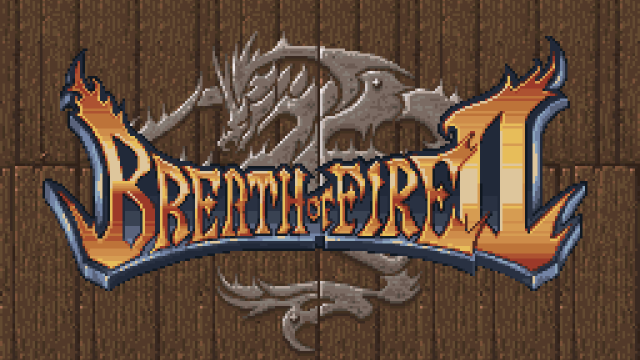

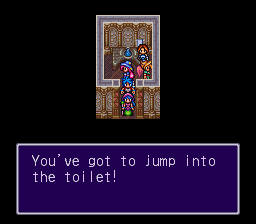
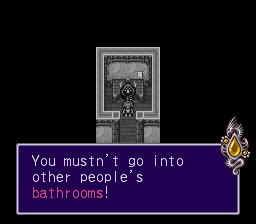
.png)
.png)
.png)
.png)
.png)
.png)
.png)
.png)
.png)
.png)
.png)
.png)
.png)
.png)
.png)
.png)
.png)
.png)
.png)
.png)
.png)
.png)
.png)
.png)
.png)
.png)
.png)
.png)
.png)
.png)
.png)
.png)
.png)
.png)
.png)
.png)
.png)
.png)
.png)
.png)
.png)
.png)
.png)
.png)
.png)
.png)
.png)
.png)
.png)
.png)
.png)
.png)
.png)
.png)
.png)
.png)
.png)
.png)
.png)
.png)
.png)
.png)
.png)
.png)
.png)
.png)
.png)
.png)
.png)
.png)
.png)
.png)
.png)
.png)
.png)
.png)
.png)
.png)
.png)
.png)
.png)
.png)
.png)
.png)
.png)
.png)
.png)
.png)
.png)
.png)
.png)
.png)
.png)
.png)
.png)
.png)
.png)
.png)
.png)
.png)
.png)
.png)
.png)
.png)
.png)
.png)
.png)
.png)
.png)

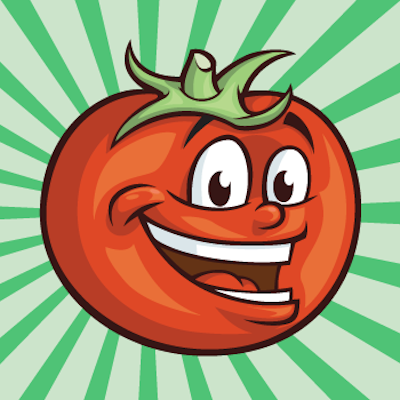
![press start to translate [Final Fantasy IV] press start to translate [Final Fantasy IV]](https://legendsoflocalization.com/wp-content/uploads/2019/08/bbenma.png)


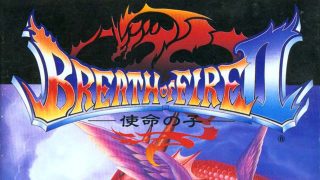
Breath of Fire II’s translation didn’t throw me off very much at all when I played it as a teenager. I got used to the awkward text very fast. As you pointed out, there are very few actual mistranslations (the yes/no thing notwithstanding) so I found the game perfectly playable. It helps that the translation is the only serious issue: the game has good graphics, good music, reasonably good gameplay, a passably good story that still gets conveyed meaningfully despite the translation… I had a good time.
I actually didn’t even remember “equip lod” from my playthrough. I only remembered it from the memes years later.
So while the translation is objectively terrible, it’s really not that much worse than a clumsy anime fansub, and at that point in my life I was pretty used to those.
Breath of Fire 3 was, TMK, alright except for some naming inconsistencies with the rest of the series, including reverting to Deis from Bleu and Myria from Tyr, hiding some of the connections and reveals. There were a few oddities or problems, but not a huge deal.
Breath of Fire IV is actually quite good except some incredibly random censorship — Scias is no longer alcoholic, the already mild scene of Fou-lu killing the emperor was removed entirely, The person who’s concerned with women on board the ship doesn’t initially mistake Ursula for a man and she doesn’t volunteer to remove her pants in public to prove otherwise, and I might have missed one — and a few other odd changes, like replacing the names of all the dragon forms that referenced the poem Jabberwocky with different ones, but it also has a lot of clever localization choices, like replacing the frankly bizarre names of the Dragon Endless with a Korean naming scheme that fits the game’s aesthetic a lot better — though at the cost of removing a minor reference — or their solution for the fact that one of the characters was originally named “Master” in plain English in the Japanese version. (Which would come across as super weird)
The whole hullabaloo over the translation of the subtitle isn’t exactly helped by the fact that ‘fatal’ has been subjected to definition drift over the years.
Originally, it meant ‘relating to fate/destiny’. Somehow, it eventually(read: now) drifted to ‘deadly’.
Just something I noticed about the “Dologany” -> Dragnil thing: in Breath of Fire 3, the name of the city of the Brood (BoF3’s name for the Dragon Clan) is named “Dragnier”. Makes me wonder if BoF1’s “Drogen” was also supposed to share the name.
Can confirm that all three are ドラグニール in Japanese. “Dragnier” fits the phonetics better than the other two, and it’s the only one of them to keep the presumably deliberate “dragon” reference.
Similarly, Winlan/Windia (and Wyndia in BoF3 and 4), Gant/Guntz, and Krypt/ThvsTomd are also meant to have the same names across games, and the Flying Fortress that’s mentioned in passing in BoF2 is the same term as what was localized as Obelisk in BoF1.
I forget if you covered it else where, but why were double attacks called ‘eggbeater’?
I checked just now and it’s simply れんぞくこうげき in Japanese, which is “consecutive attack” or “chain attack”. I have no idea why it became eggbeater though. Was there ever a wrestling move by that name maybe? I guess someone was just being creative.
Thanks, boss!
Possibly a reference to the eggbeater kick water polo players use to stay upright, since it’s a continuous series of kicks with alternating legs? Regardless, it’s awkward at best as a translation in this context. I think I’d have gone with “combo” for multiple attacks.
Your eggs were beaten!
Could it be that they just got the first syllable れん mixed up with らん(卵)”egg” ?
I wonder what kind of tools they were using to translate this game.
I’m confused as to how Othello is a trademarked name. Last time I checked, Shakespeare lived long before copyright law.
Trademarks aren’t the same as copyright. After all, “Apple” is trademarked. “Othello” is used in commerce to represent the source of a product, and using that name to refer to a clone of that product would suggest a relationship or endorsement that doesn’t exist.
Actually, the GBA version DOES fix some issues. Examples:
“Equip lod/bait” -> “Equip rod/bait”
“The Line got got away.” -> “The Line got snapped.” (“Line still has unnecessary captialization, but the double “got” is okay now.)
Another one:
“DeadMaze” -> “DeadAmze” (the maze that leads to Windia)